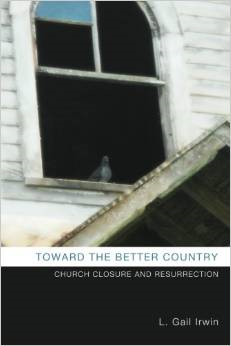I’ve heard some interesting stories about what happens to church buildings after a closure. Sometimes they are dismantled and rebuilt in new locations, either as historical buildings, family chapels or for new uses.
Here’s a story that comes out of World War II. A church was destroyed in a blitz and sat in ruins for a number of years. In the 1950’s, a local pastor decided to take it apart brick by brick, almost single-handedly. He used the bricks to build a new church building on a nearby site.
I recently heard of a tiny Anglican church in Nova Scotia that was sold after its closure to a congregation in the American South. The congregation had the building dismantled in Canada and rebuilt in their town for use as their church.
Why do you think church buildings engender such deep affection? Do you think its possible for the Holy Spirit, or some form of “positive energy” to reside in the building or its materials, even after the congregation has abandoned it? Or are we simply attached to a possession, worshipping an idol?




It’s a place of serenity and peace. Everytime I step into church a sence of calmness comes over me and I feel sheltered, unlike no other place. Just to walk around around gazing at the windows, statues, stations of the cross, the crucifix, I no long think about the worries on my heart, as they are foolish compared to the death of our Savior. While I am sitting in an empty church, or even with others there, I feel that Christ and the saints are watching over me and it brings peace.
Josh, you are someone who participants in a theatre group that is housed in what was once a Catholic church. I wonder if you ever feel the sense of peace there that you talk about feeling in a functioning church building.